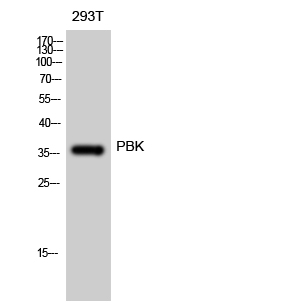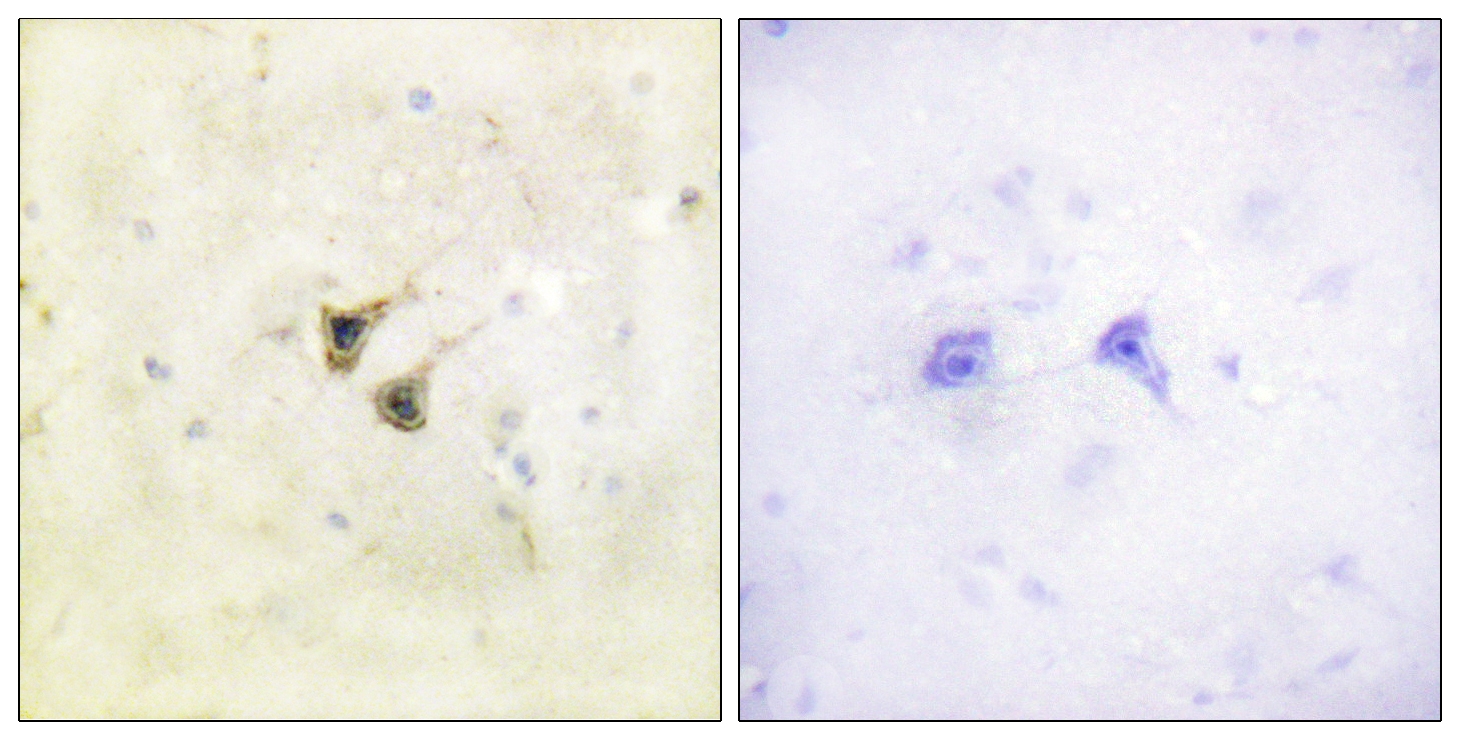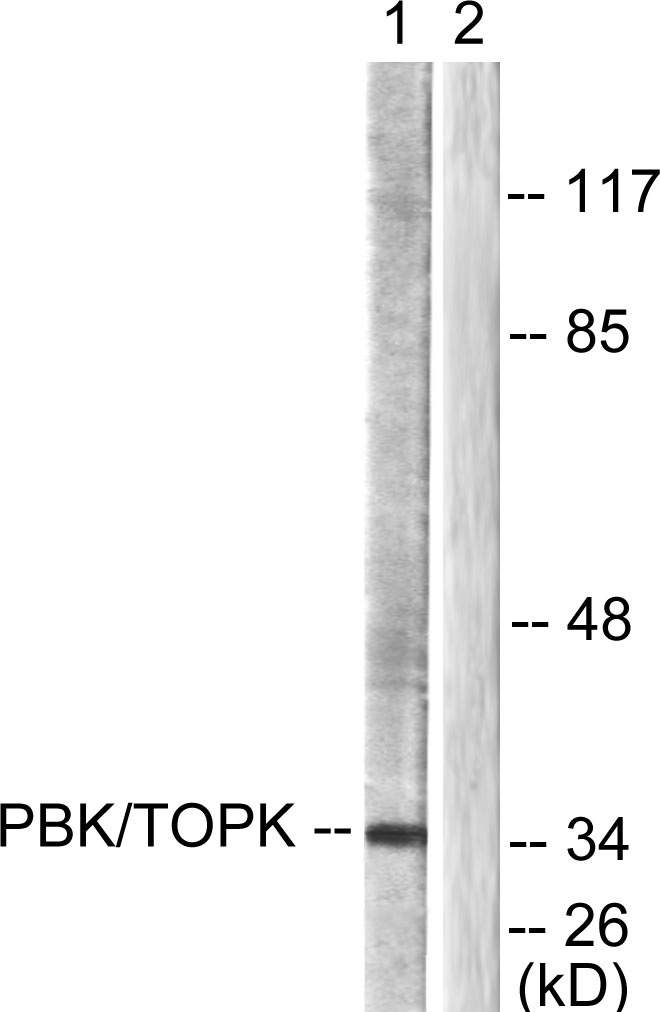PBK Polyclonal Antibody
- Catalog No.:YT3611
- Applications:WB;IHC;IF;ELISA
- Reactivity:Human;Monkey
- Target:
- PBK
- Gene Name:
- PBK
- Protein Name:
- Lymphokine-activated killer T-cell-originated protein kinase
- Human Gene Id:
- 55872
- Human Swiss Prot No:
- Q96KB5
- Mouse Swiss Prot No:
- Q9JJ78
- Immunogen:
- The antiserum was produced against synthesized peptide derived from human PBK/TOPK. AA range:1-50
- Specificity:
- PBK Polyclonal Antibody detects endogenous levels of PBK protein.
- Formulation:
- Liquid in PBS containing 50% glycerol, 0.5% BSA and 0.02% sodium azide.
- Source:
- Polyclonal, Rabbit,IgG
- Dilution:
- WB 1:500 - 1:2000. IHC 1:100 - 1:300. ELISA: 1:5000.. IF 1:50-200
- Purification:
- The antibody was affinity-purified from rabbit antiserum by affinity-chromatography using epitope-specific immunogen.
- Concentration:
- 1 mg/ml
- Storage Stability:
- -15°C to -25°C/1 year(Do not lower than -25°C)
- Other Name:
- PBK;TOPK;Lymphokine-activated killer T-cell-originated protein kinase;Cancer/testis antigen 84;CT84;MAPKK-like protein kinase;Nori-3;PDZ-binding kinase;Spermatogenesis-related protein kinase;SPK;T-LAK cell-originated protein kinas
- Observed Band(KD):
- 36kD
- Background:
- PDZ binding kinase(PBK) Homo sapiens This gene encodes a serine/threonine protein kinase related to the dual specific mitogen-activated protein kinase kinase (MAPKK) family. Evidence suggests that mitotic phosphorylation is required for its catalytic activity. The encoded protein may be involved in the activation of lymphoid cells and support testicular functions, with a suggested role in the process of spermatogenesis. Overexpression of this gene has been implicated in tumorigenesis. Alternative splicing results in multiple transcript variants. [provided by RefSeq, Jul 2013],
- Function:
- catalytic activity:ATP + a protein = ADP + a phosphoprotein.,enzyme regulation:Activated by phosphorylation.,function:Phosphorylates MAP kinase p38. Seems to be active only in mitosis. May also play a role in the activation of lymphoid cells. When phosphorylated, forms a complex with TP53, leading to TP53 destabilization and attenuation of G2/M checkpoint during doxorubicin-induced DNA damage.,PTM:Phosphorylated; in a cell-cycle dependent manner at mitosis.,similarity:Belongs to the protein kinase superfamily. Ser/Thr protein kinase family. MAP kinase kinase subfamily.,similarity:Contains 1 protein kinase domain.,subunit:Interacts with DLG1 and TP53.,tissue specificity:Expressed in the testis and placenta. In the testis, restrictedly expressed in outer cell layer of seminiferous tubules.,
- Subcellular Location:
- nucleus,
- Expression:
- Expressed in the testis and placenta. In the testis, restrictedly expressed in outer cell layer of seminiferous tubules.
- June 19-2018
- WESTERN IMMUNOBLOTTING PROTOCOL
- June 19-2018
- IMMUNOHISTOCHEMISTRY-PARAFFIN PROTOCOL
- June 19-2018
- IMMUNOFLUORESCENCE PROTOCOL
- September 08-2020
- FLOW-CYTOMEYRT-PROTOCOL
- May 20-2022
- Cell-Based ELISA│解您多样本WB检测之困扰
- July 13-2018
- CELL-BASED-ELISA-PROTOCOL-FOR-ACETYL-PROTEIN
- July 13-2018
- CELL-BASED-ELISA-PROTOCOL-FOR-PHOSPHO-PROTEIN
- July 13-2018
- Antibody-FAQs
- Products Images

- Western Blot analysis of 293T cells using PBK Polyclonal Antibody diluted at 1:500

- Immunohistochemistry analysis of paraffin-embedded human brain tissue, using PBK/TOPK Antibody. The picture on the right is blocked with the synthesized peptide.

- Western blot analysis of lysates from COS7 cells, treated with Nocodazole 1ug/ml 16h, using PBK/TOPK Antibody. The lane on the right is blocked with the synthesized peptide.

